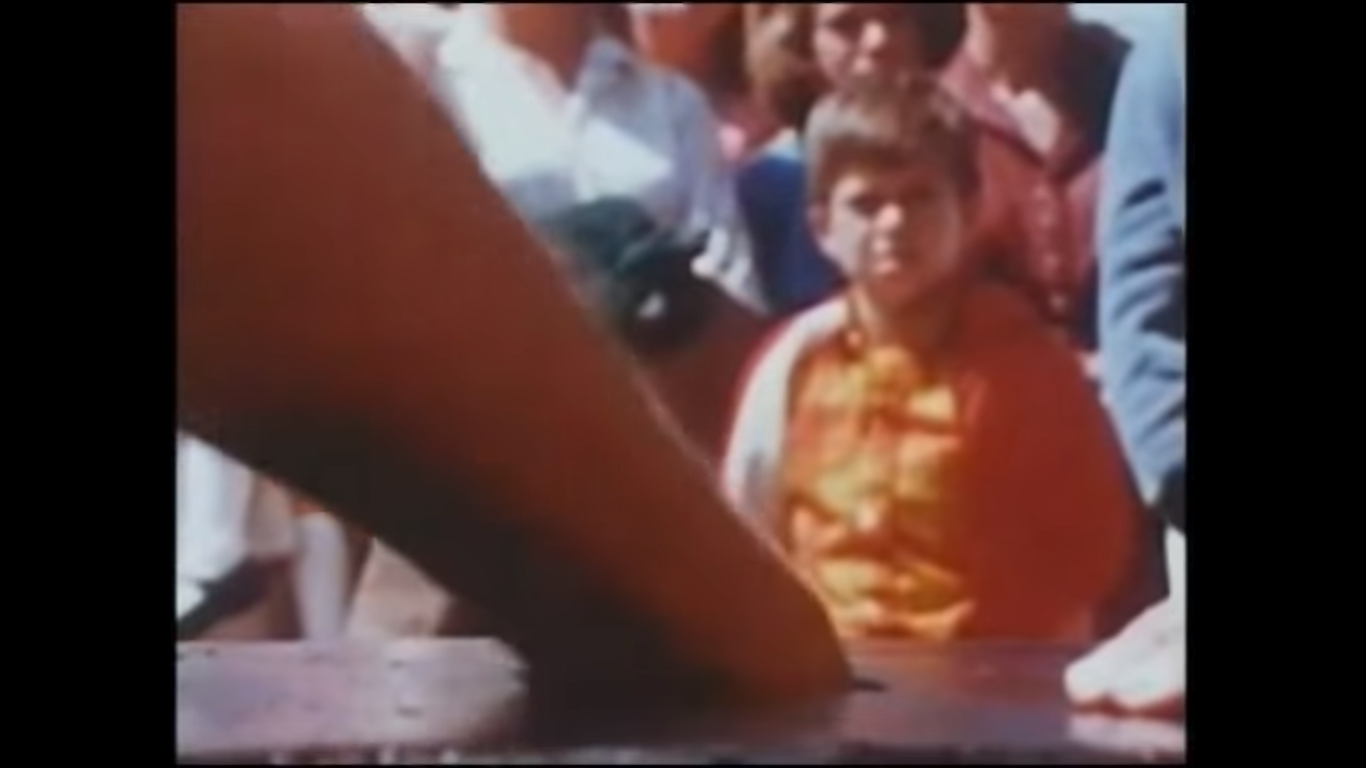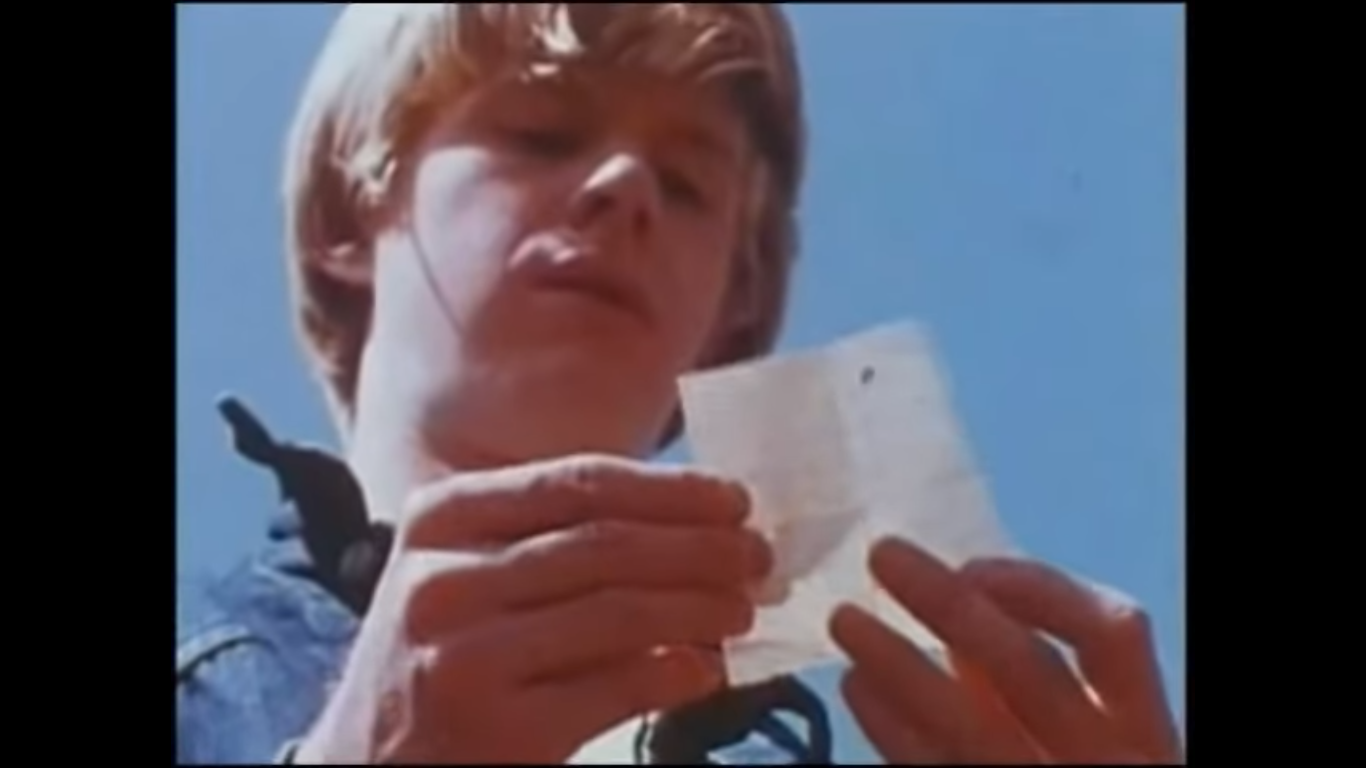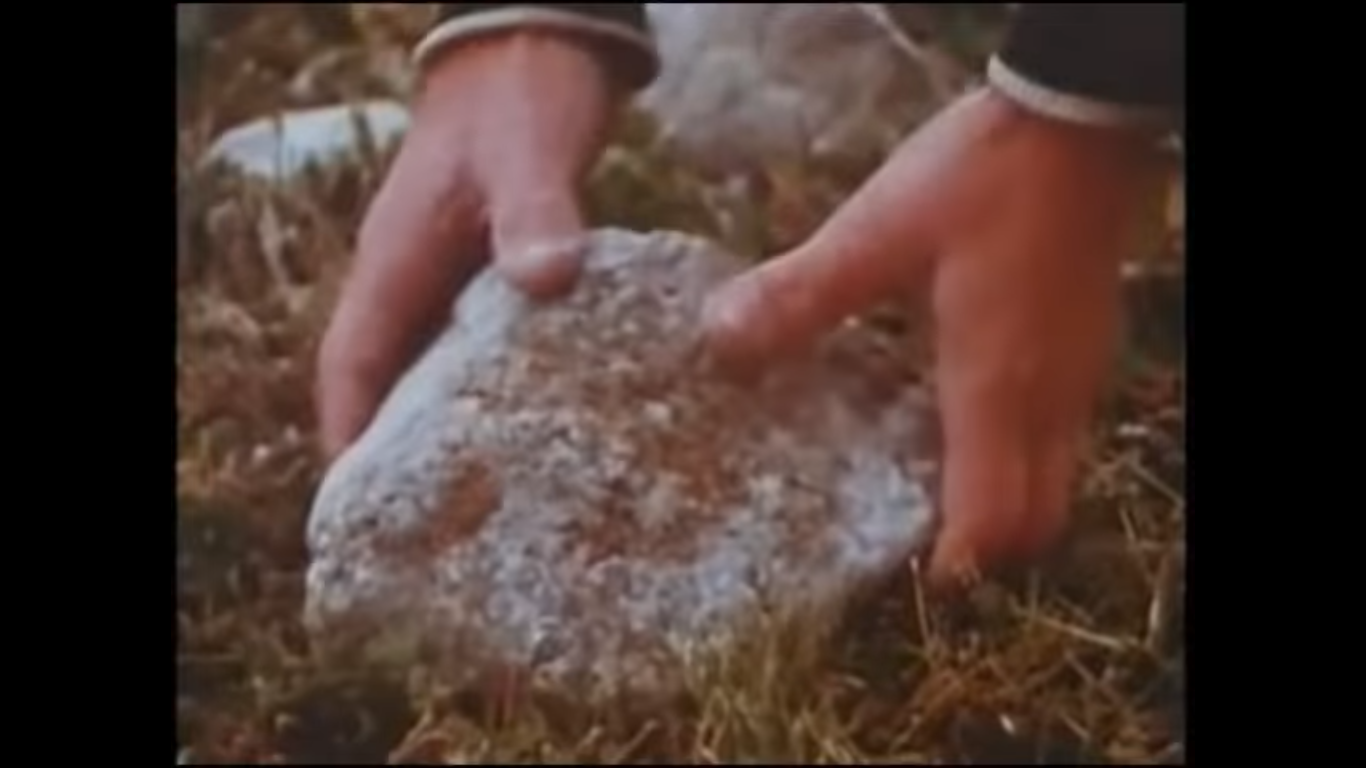The works of horror fiction luminary Shirley Jackson might always play best in the chilly, overcast weeks leading up to Halloween, when gathering around a fire to elegantly process trauma seems to make more intuitive sense than in, say, June. That’s clearly the bet Netflix made in timing the release of its 10-part adaptation of The Haunting of Hill House, only the latest treatment of her classic. As it happens, the same logic held nearly 50 years ago, when, on October 17, 1969, Encyclopædia Britannica Films released its 18-minute, 16 mm version of Jackson’s short story The Lottery. This was an “educational” effort that presumably served primarily to educate kids not to trust their teachers uncritically, since they might at any moment introduce them to some grim, grim shit in the middle of the day.
 The bone-brittle plot of The Lottery is well known. (Read the story here if you don’t want spoilers about a seven-page story from 1948.) The residents of a small town gather in its square one morning, the adults chatting quietly outside their temporarily shuttered storefronts and empty homes, the kids ominously gathering stones while playing. The town’s head honcho welcomes everyone to the annual festivities and ascertains that everyone’s been able to make it, or is represented by proxy. Various logistics are run through for the event: a lottery, in which slips of paper are drawn from a box by each family. The sense of a slightly forced conviviality Jackson introduced at the start gives way to an edgier mood in the crowd as the representatives step forward to take their turn. There are some mutterings about how neighboring towns have done away with the lottery, and some insistent admonitions from older folks about how there’s always been a lottery and always should be. Finally, one family draws the marked paper; each member of the family draws again individually; the mother draws the marked paper. The entire village stones her to death. She dies protesting the unfairness. The end.
The bone-brittle plot of The Lottery is well known. (Read the story here if you don’t want spoilers about a seven-page story from 1948.) The residents of a small town gather in its square one morning, the adults chatting quietly outside their temporarily shuttered storefronts and empty homes, the kids ominously gathering stones while playing. The town’s head honcho welcomes everyone to the annual festivities and ascertains that everyone’s been able to make it, or is represented by proxy. Various logistics are run through for the event: a lottery, in which slips of paper are drawn from a box by each family. The sense of a slightly forced conviviality Jackson introduced at the start gives way to an edgier mood in the crowd as the representatives step forward to take their turn. There are some mutterings about how neighboring towns have done away with the lottery, and some insistent admonitions from older folks about how there’s always been a lottery and always should be. Finally, one family draws the marked paper; each member of the family draws again individually; the mother draws the marked paper. The entire village stones her to death. She dies protesting the unfairness. The end.
It’s a harrowingly spare vision of baseless groupthink, conformity, and calcified custom, with subtexts about the construction of masculinity through violence. What’s less clear is why someone would read The Lottery and think, “Now here’s a movie for children!”
But that’s precisely what happened at Encyclopædia Britannica Films. Perhaps, in the context of 1969, these themes were urgent enough to provide the production’s go-ahead, though the generation of unexpectedly scarred teen viewers who show up in the YouTube comment section still seem kind of irritated about it.
 The film’s treatment of Jackson’s material is extremely faithful, down to the sparse dialog; how could it not be, adapting such an elemental seven pages? The Lottery plays out its hand methodically and mercilessly. Its only flourishes are quick, disorienting pans across faces in the crowd to heighten the sense of social claustrophobia in the still, open air. It lacks Jackson’s austere but pointed style — one commenter remarks, “My favorite part is when they point the camera at someone and he talks” — but it gets the job done, while also introducing the world to Ed Begley, Jr.
The film’s treatment of Jackson’s material is extremely faithful, down to the sparse dialog; how could it not be, adapting such an elemental seven pages? The Lottery plays out its hand methodically and mercilessly. Its only flourishes are quick, disorienting pans across faces in the crowd to heighten the sense of social claustrophobia in the still, open air. It lacks Jackson’s austere but pointed style — one commenter remarks, “My favorite part is when they point the camera at someone and he talks” — but it gets the job done, while also introducing the world to Ed Begley, Jr.
The 1969 Lottery was directed by Larry Yust, son of longtime Encyclopædia Britannica editor-in-chief Walter, and was among EB Films’ best-selling educational films. Yust directed a whole host of entries, including others in the series of literary adaptations of which The Lottery was a curious part; Hawthorne, Melville, Conrad, Hemingway and Ionesco and more were available on 16 mm for the classroom, alongside fare like “How To Measure Time”, “Maps for a Changing World (The Airplane Changes Our World)”, and “Simple Machines: The Lever Family (Lever, Pulley, Wheel and Axle)”.
And so the proliferation of 16 mm projectors, federal funding issuing from a patriotic Cold War educational urgency, expansive private sector profit margins, and popular idealism about lighting young minds all combined for a strange moment when the children of America sat down in classrooms to learn about electrons and watch villagers stone each other to death. What a time to be alive (or not).

